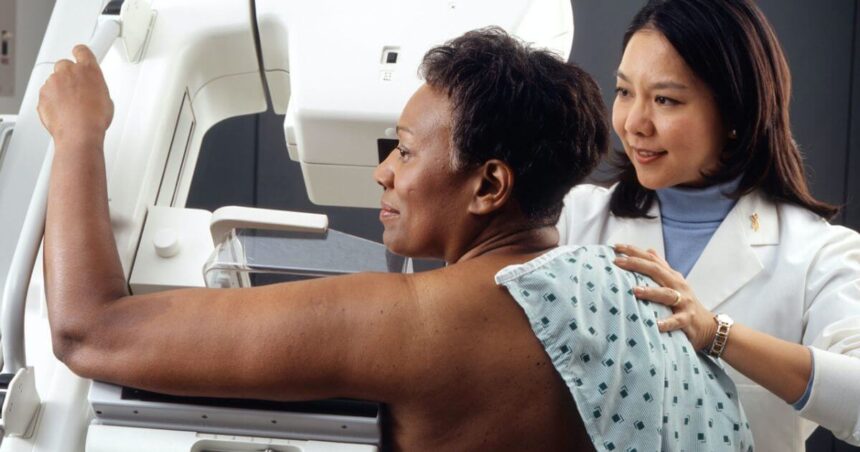Mammograms are safe and important for detecting breast cancer early. They are special X-ray exams designed to detect early signs of breast cancer. They work by using low doses of radiation to produce images of the breast tissue. These images can show abnormalities, like tumors or calcifications, which might not be felt during a physical exam.
This exam is a key tool in breast cancer screening because it helps find cancer early, often before any symptoms appear. Early detection is crucial because it increases the chances of successful treatment and can save lives.
Radiation Exposure
The radiation dose from a mammogram is quite small. It’s comparable to the amount of radiation you would naturally be exposed to over a few months from everyday sources like the sun and minerals in the earth.
For most women, this level of exposure is considered very low risk. While radiation can carry some risk, the amount used in mammograms is minimized to be as safe as possible while still providing clear and useful images.
Weighing the Benefits
When considering mammograms’ safety, it’s important to compare the benefits with the risks. Here’s why mammograms are worth it:
- Early Detection: Mammograms can detect breast cancer early.
- Better Outcomes: Finding cancer early means treatment can start sooner, often leading to better results.
- Less Aggressive Treatments: Early detection usually means less aggressive treatments are needed.
- Minimal Radiation Risk: A mammogram’s small amount of radiation is a reasonable trade-off for the significant benefits.
- Life-Saving: Early detection can save lives, making regular mammograms highly recommended.
False Positives
One concern with mammograms is the possibility of false positives. This happens when a mammogram shows something suspicious that turns out not to be cancer. False positives can lead to additional tests, like more imaging or a biopsy, and can cause anxiety and stress.
It’s important to note that false positives are more common than any issues related to radiation exposure. While they can be inconvenient and problematic, they are part of a thorough screening process.
Advances in Technology
Advances in mammography technology have made the process more accurate and less stressful. 3D mammography, also known as tomosynthesis, creates a three-dimensional image of the breast by taking multiple X-rays from different angles.
This technology provides a more transparent and more detailed view of the breast tissue, which helps reduce the number of false positives. With 3D mammography, doctors can better distinguish between harmless and potentially harmful findings, leading to fewer unnecessary follow-up tests.
Radiation Risks
The risk of developing breast cancer from the radiation in mammograms is very low. Here are the key points:
- Extremely Low Risk: The risk for women aged 40 to 49 getting annual mammograms is about 1 in 100,000.
- Small Risk: This is a tiny risk compared to the big benefit of finding breast cancer early.
- Carefully Studied: The low radiation level in mammograms has been thoroughly researched.
- Safe for Routine Screening: Mammograms are considered safe and effective for regular use in cancer detection.
Screening Schedules
The frequency of mammograms can vary based on individual risk factors. Some women might benefit from annual screenings, while others only need them every two years. Factors like age, family history of breast cancer, genetic predisposition, and overall health play a role in determining the best screening schedule.
It is important to discuss your situation with your healthcare provider to decide on the most appropriate screening plan. Regular communication with your doctor will help tailor a screening schedule that protects your health.
Minimizing Exposure
To keep radiation exposure as low as possible during mammograms, technicians use the best techniques to ensure the equipment is well-maintained. This includes using the lowest possible radiation dose to get clear images and regularly checking and calibrating the machines. These measures help minimize any risk and ensure that mammograms remain a safe and effective tool for breast cancer screening.
Purpose of Mammograms
Mammograms detect existing cancers early, which can significantly improve treatment outcomes. They don’t prevent cancer from developing. Regular mammograms are part of a proactive approach to breast health, allowing for early detection and timely treatment. Along with self-exams and regular check-ups with your healthcare provider, mammograms are a crucial component of comprehensive breast cancer prevention and care.
While there are some concerns about radiation from mammograms, the benefits of early detection and treatment of breast cancer make them a valuable tool. Always discuss your screening options with your healthcare provider to make the best choice for your health.

